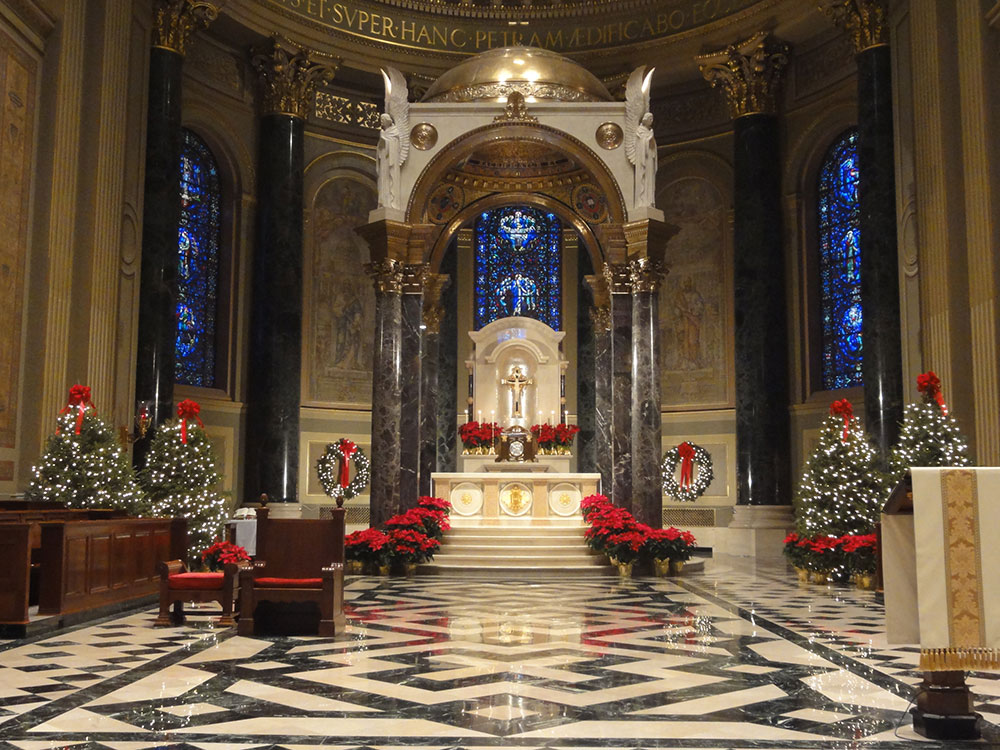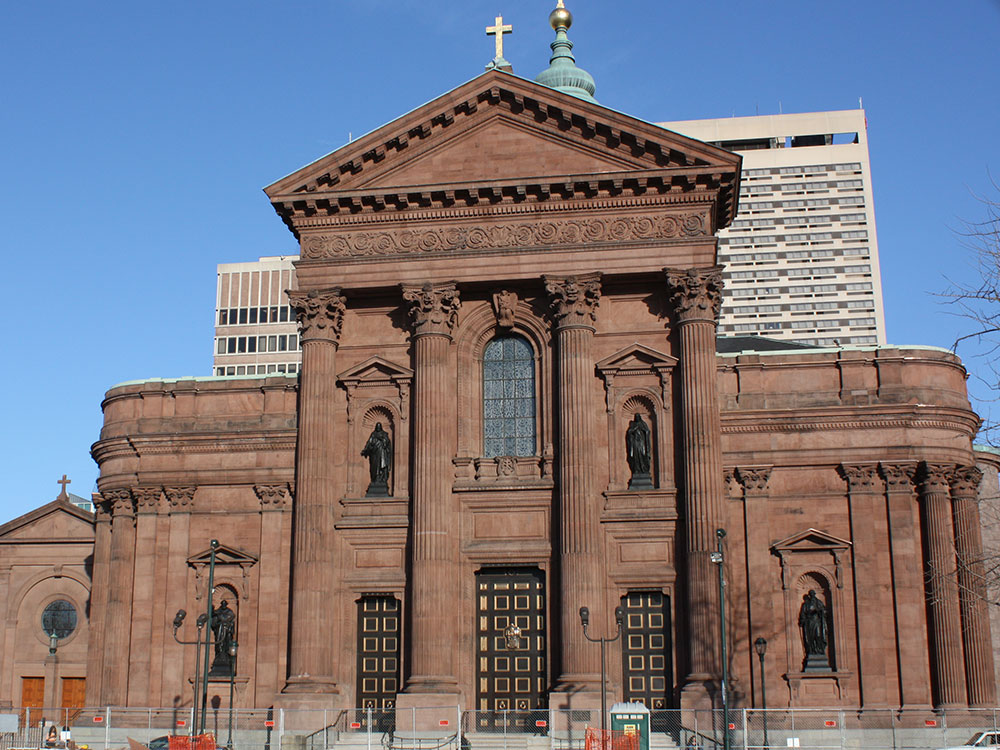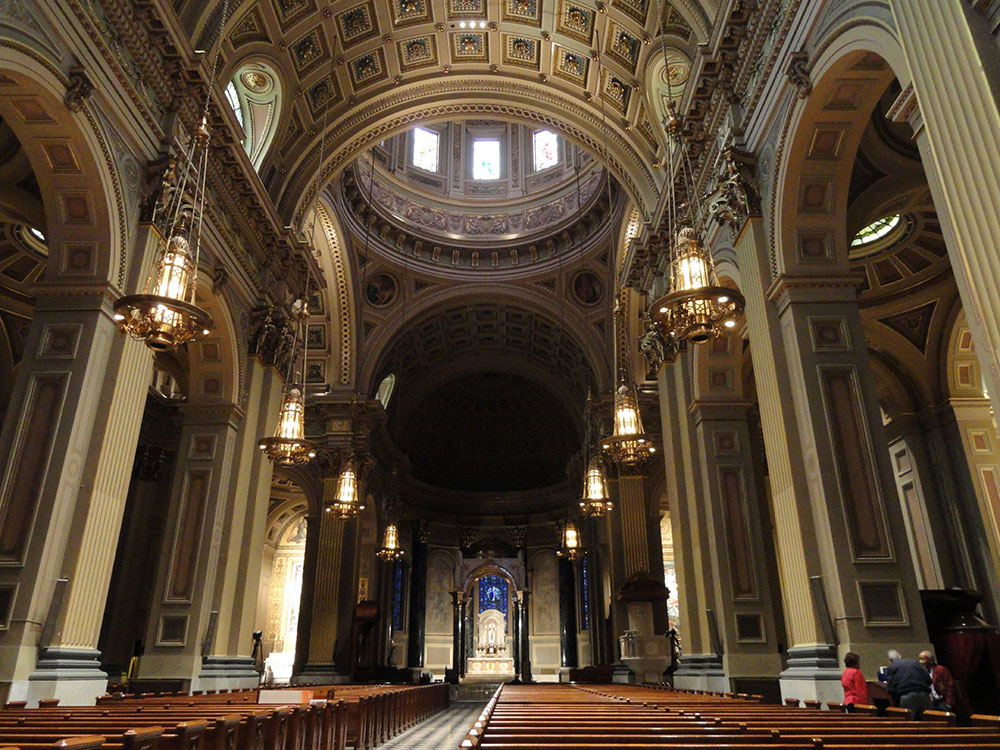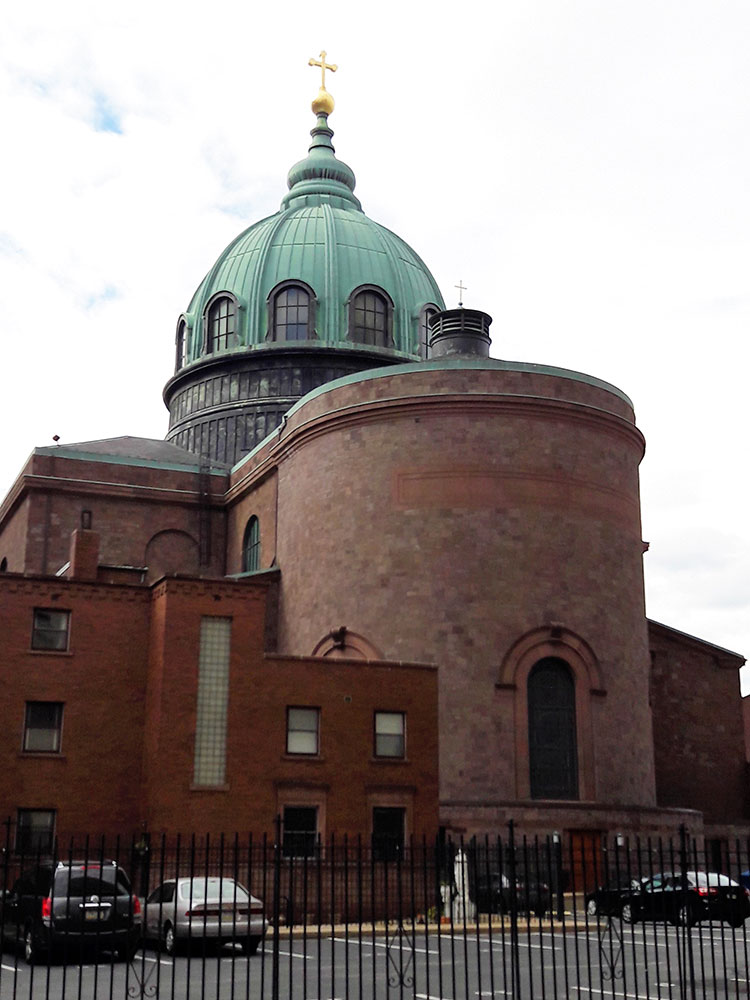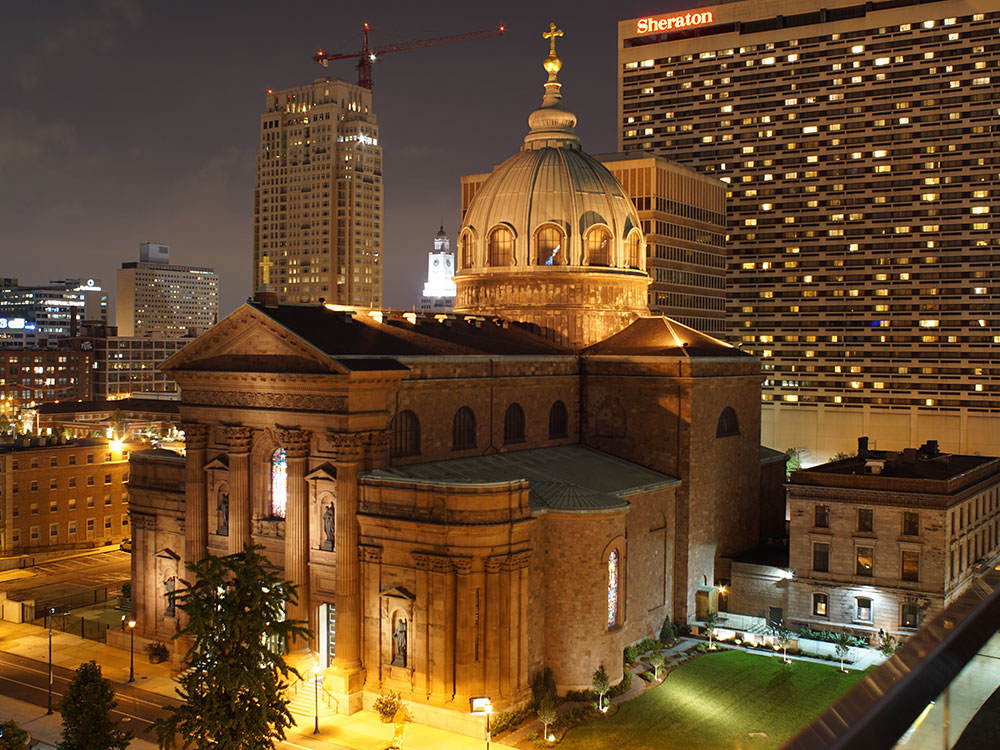Cathedral is the largest Catholic church in Pennsylvania and is the largest brownstone structure and one of the most architecturally notable structures in Philadelphia
General Information
How to Get There
Head south on S 15th St toward S Penn Square. S 15th St turns slightly left and becomes S Penn Square. Keep left to stay on S Penn Square. S Penn Square turns slightly left and becomes John F Kennedy Blvd. Turn right onto N 16th St/State Rte 3027. Slight left onto Benjamin Franklin Pkwy. Slight right onto N 18th St
Overview
The Cathedral Basilica of Saints Peter and Paul, head church of the Roman Catholic Archdiocese of Philadelphia, is located at 18th Street and the Benjamin Franklin Parkway, on the east side of Logan Square. It was built between 1846 and 1864, and was designed by Napoleon LeBrun, from original plans by the Reverend Mariano Muller and the Reverend John B. Tornatore, with the dome and Palladian facade, designed by John Notman, added after 1850. The interior was largely decorated by Constantino Brumidi.
The cathedral is the largest Catholic church in Pennsylvania, and was listed on the U.S. National Register of Historic Places in 1971. The cathedral has been the site of two papal Masses, one celebrated by Pope John Paul II in 1979, and the other by Pope Francis in 2015.
With its grand façade, vaulted dome, ornate main altar, eight side chapels and main sanctuary that comfortably holds 2,000 worshippers, the Cathedral Basilica of Saints Peter and Paul is the largest brownstone structure and one of the most architecturally notable structures in the city of Philadelphia.
The cathedral, presented in a Roman-Corinthian style of architecture, is modeled after the Lombard Church of St. Charles (San Carlo al Corso) in Rome. Its Palladian façade and aqua oxidized-copper dome are in the Italian Renaissance manner, as is the spacious interior, which features an oversized apse of stained glass and red antique marble in proportions reminiscent of Roman churches. A baldachin (canopy) over the main altar and the three altars on each of the side aisles point up this Italian Renaissance flavor. In the bowels of the building is the compact "Crypt of the Bishops".
The basilica was designed by Napoleon LeBrun based on plans drawn up by the Reverend Mariano Muller and the Reverend John B. Tornatore, and by John Notman who added the dome and facade. LeBrun supervised the project from 1846 to 1851, when Notman took over until 1857, after which the cathedral was completed under LeBrun's supervision.
LeBrun was a native Philadelphian born to French-Catholic parents. He designed numerous churches throughout Philadelphia, including St. Patrick's Catholic Church, Twentieth Street (1841); the Seventh Presbyterian Church (1842); the Scot's Presbyterian Church (1843); the Catholic Church of St. Peter the Apostle (German), Fifth Street (1843); and the Protestant Episcopal Church of the Holy Nativity (1844), no longer standing. Other notable buildings he designed include the Philadelphia Academy of Music.
Notman is most noted for his Philadelphia ecclesiastical architecture for the Protestant Episcopal Church, including St. Mark's Church, Locust Street (1850); St. Clement's Church, Twentieth Street (1857); and the Church of the Holy Trinity, Rittenhouse Square. He also designed the Athenaeum of Philadelphia and parts of the New Jersey State House.
Constantino Brumidi painted the ceiling mural in the dome - The Assumption of the Virgin into Heaven (1868) - and the round portraits of St. Matthew, St. Mark, St. Luke and St. John on its pendentives. Brumidi was a Greek/Italian-American painter, best known for his murals in the United States Capitol in Washington, D.C., especially the Apotheosis of George Washington in the dome of the rotunda.
Architect Henry D. Dagit renovated the cathedral interior, 1914-15, adding the apse behind the High Altar. D'Ascenzo Studios executed the apse's stained glass windows and mosaic murals.
The four bronze statues in niches on the building's main facade - Mary, Jesus, St. Peter and St. Paul - were added in 1915.
This article uses material from the Wikipedia article "Cathedral Basilica of Saints Peter and Paul (Philadelphia)", which is released under the Creative Commons Attribution-Share-Alike License 3.0
